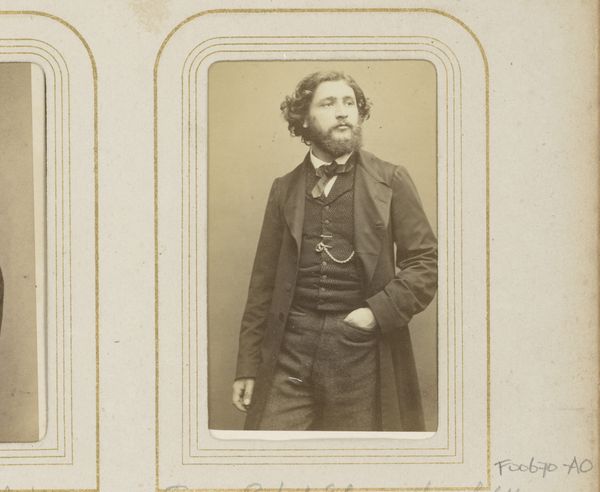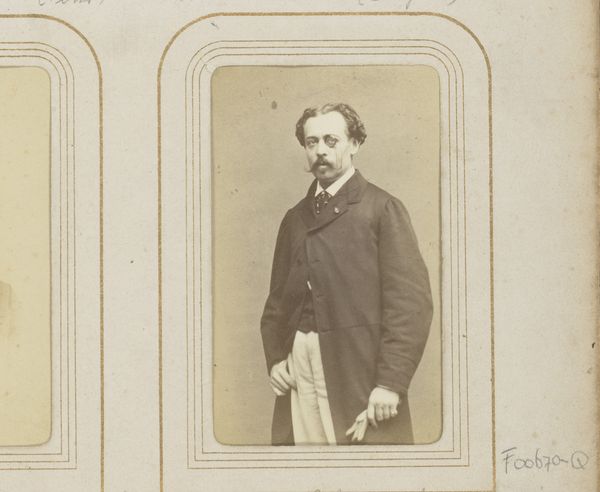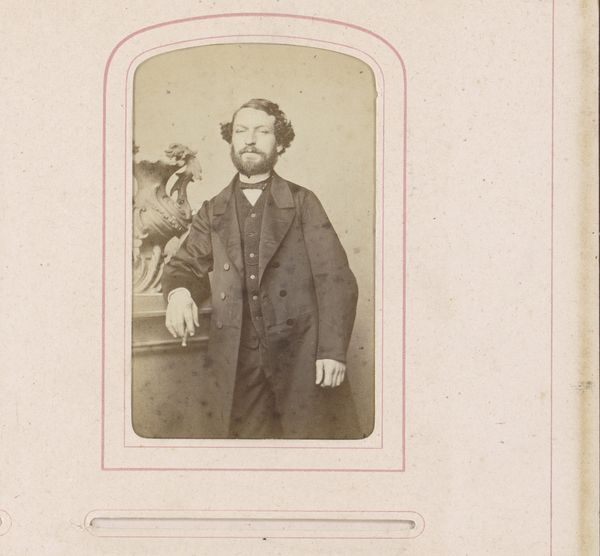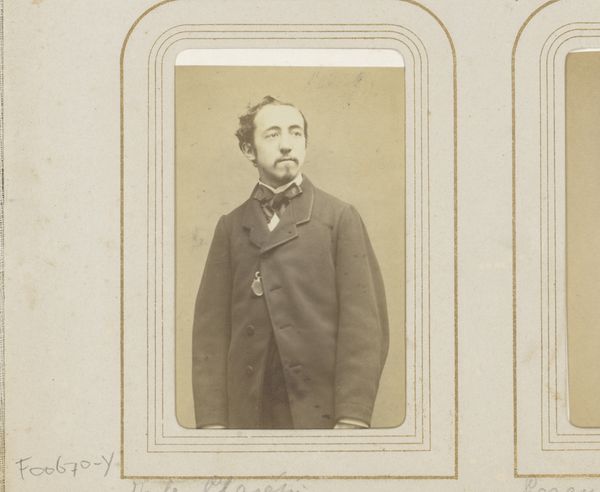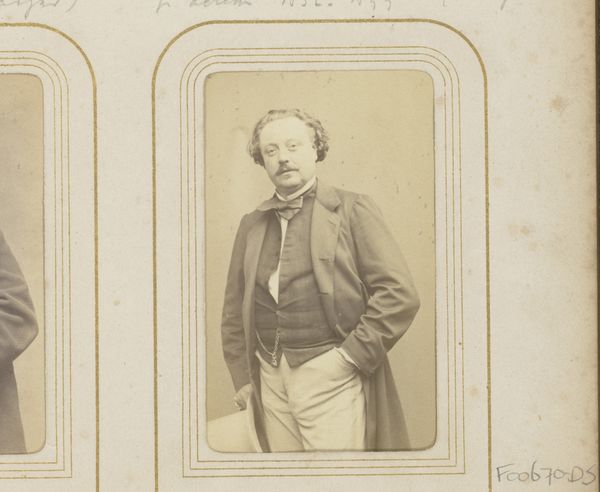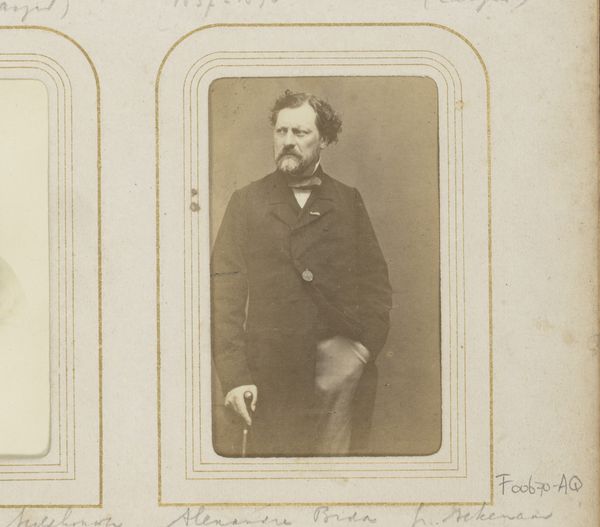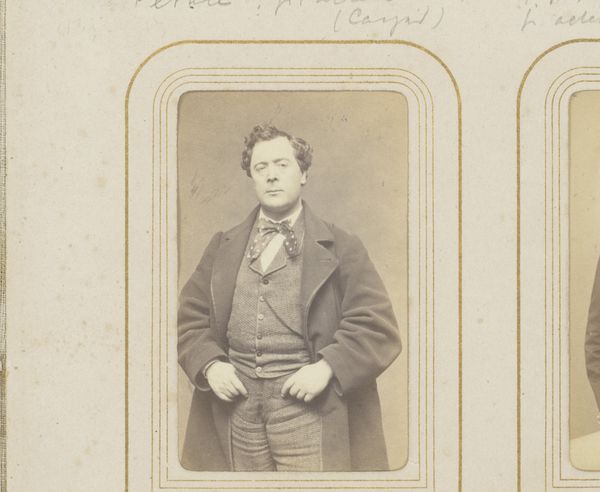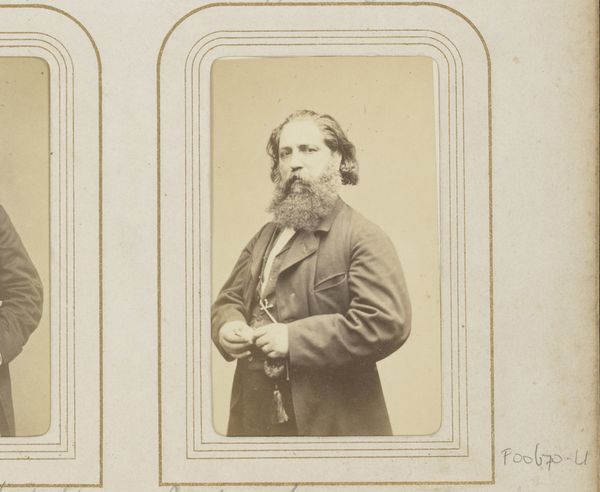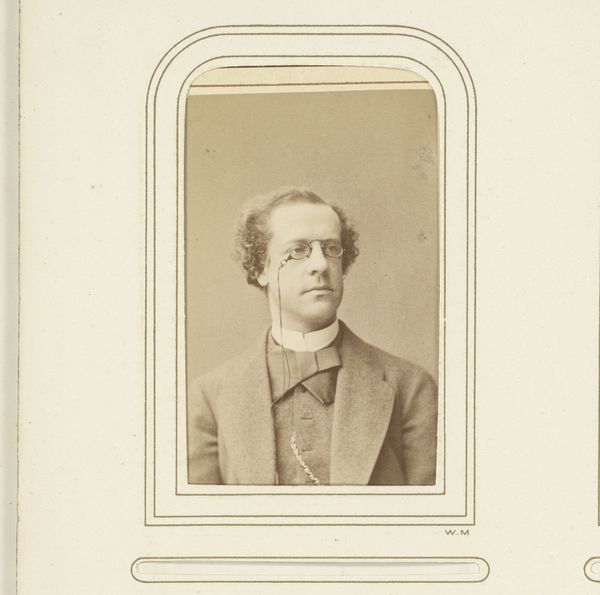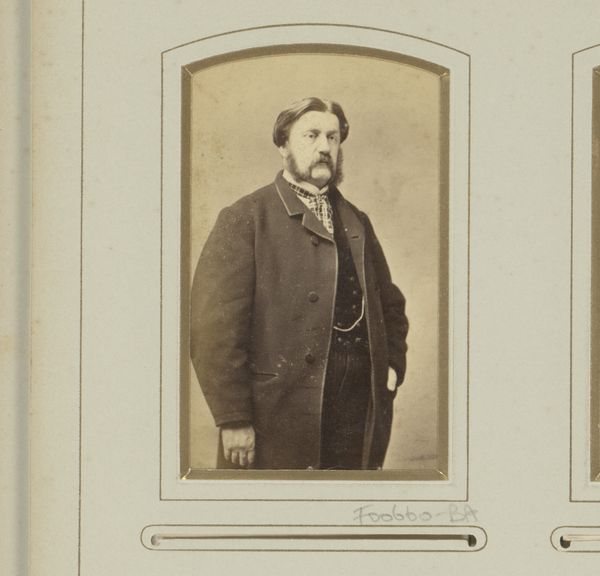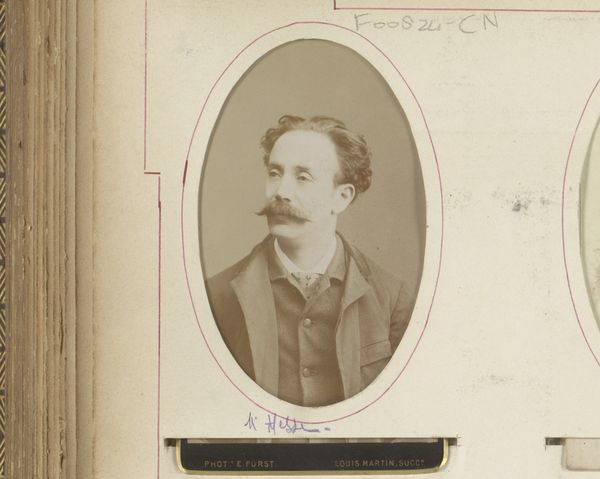
Dimensions: height 84 mm, width 51 mm
Copyright: Rijks Museum: Open Domain
Curator: The subject seems lost in thought, his gaze directed away, suggesting perhaps the weight or the fleeting nature of fame. Editor: Let’s delve into this photograph. Entitled "Portrait of Ernesto Nicolini," created sometime between 1861 and 1872 by Carjat et Cie, it is a gelatin silver print. Nicolini was, of course, a celebrated opera singer. Curator: Absolutely, and thinking about opera, especially within a 19th-century context, situates Nicolini within complex systems of power and representation. He embodies a specific masculinity, amplified and stylized for the stage and, now, preserved here in a way that is at once intimate and incredibly constructed. I am immediately interested in how the artistic conventions that define performance culture operate here. Editor: What’s striking is the lack of theatricality, the muted quality. Considering the medium, the access to photographic studios that famous performing artists were provided certainly played a role in shaping this "authentic" depiction for the broader public, especially with the growth of celebrity culture at this time. It invites interesting questions of visibility and fame. Curator: I completely agree. How does he understand his role as a subject, in collaboration or perhaps in negotiation with Carjat et Cie? And what does it say about shifting modes of portraiture and identity formation during this period? Was it collaborative or controlled? How much did he see this image contributing to his narrative? Editor: Given that Carjat et Cie produced photographic portraits of many other notable figures, the gallery system clearly played a part in controlling this celebrity representation. As such, how do we see portraits such as this playing into the institutional power dynamics that helped the elites rise into greater fame and notability, especially via a cultural hub like the Rijksmuseum today? Curator: Yes, exactly! The placement within the museum adds yet another layer of context. Thinking critically about the politics of display and the ways in which museums solidify certain historical narratives and overlook others remains critical to an understanding of how fame plays into a complex understanding of legacy. Editor: I hadn't thought of it that way. Viewing this portrait provides insights into photography’s public role in shaping reputations. Thanks for helping me look at it differently. Curator: Thanks to you. The piece underscores photography’s unique ability to blend reality and performance, reminding us that what we see is always a carefully crafted representation.
Comments
No comments
Be the first to comment and join the conversation on the ultimate creative platform.
